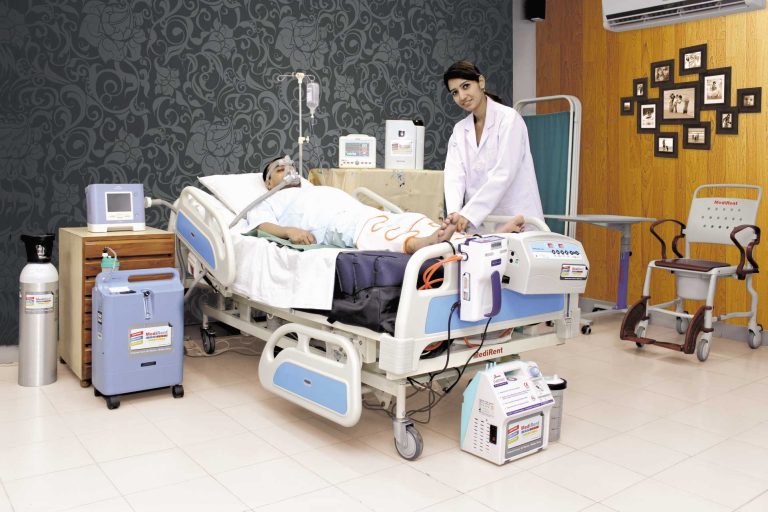Good quality sleep is essential for our overall health and well-being. That’s why many people are now opting to have hospital beds at home instead of traditional ones.
Hospital beds offer a range of benefits, including pressure relief, adjustable positioning capabilities, improved blood circulation, and more comfortable support—making them an excellent choice for those who need specialized care or are recovering from an illness or injury.
How Poor Sleep Quality Affects Your Health
When we don’t get enough sleep, it can seriously impact our mental and physical health. Poor sleep quality has been linked to a higher risk of developing certain conditions, including cardiovascular disease, diabetes, and depression.
It can also lead to decreased alertness during the day, making concentrating or staying focused on tasks hard. When you opt to find your ideal hospital bed for your home, you can make sure that you’re getting the best possible sleep quality.
Hospital beds are now transforming the home healthcare industry and helping people get the necessary sleep. Let’s look at some of the benefits you can expect from having a hospital bed at home.
Benefits of Hospital Beds for Home Use
A hospital bed offers much more than just a place to sleep.
- Pressure Relief For Comfort
Hospital beds are designed to help distribute your body weight more evenly and reduce joint pressure. This helps decrease pain, improve circulation, and allows you to move around quickly during sleep.
Most pressure points are relieved through adjustable positioning of the mattress, which can be done manually or electronically. This helps reduce tossing and turning during sleep, allowing you to enjoy a more restful night.
- Adjustable Positioning Capabilities
With a hospital bed, you can adjust the head and foot sections of the bed to find the ideal sleeping position for maximum comfort. You can also ensure that pillows and blankets are properly adjusted for optimal support.
For instance, if you or your loved one is recovering from an illness or injury, you can ensure the bed is in the best possible position to facilitate healing. If a leg injury requires an elevated leg, a hospital bed is ideal for that purpose.
- Improved Circulation & Respiratory Support
Having a hospital bed at home also helps improve blood circulation and respiratory support, especially for those suffering from chronic conditions like COPD.
The adjustable positions help promote better airflow and reduce lung blockages for improved breathing. This can also lead to better sleep quality overall.
- Better Accessibility For Caregivers
Hospital beds are designed to provide better access for caregivers when necessary. This can make it easier for medical personnel or family members to check on the patient and provide care in a comfortable setting.
- Helps User Positioning
In addition, hospital beds are designed to help the user with positioning. This includes helping them move from one position to another smoothly and safely.
This can be especially helpful for those suffering from mobility issues or recovering from surgery. Patients can easily adjust their position to relieve pressure points and maximize comfort during sleep.
Additional Features of Hospital Beds
Hospital beds are designed with additional features that provide even more comfort and convenience than traditional beds. Some of these features include:
- Side rails that allow you to move into different positions while still being safe
- Mattresses made of memory foam, which provides more support and comfort
- Overbed tables that make it easier to eat or work in bed
- Electric height adjustments so the bed can be raised or lowered as needed.
These features can help you get the best sleep possible while ensuring access to all the necessary items within reach.
How To Find The Perfect Bed For Your Needs?
When it comes to selecting the right hospital bed, there are several factors that you should consider:
1. Size: Before purchasing your hospital bed, make sure it fits in the space allocated for it in your home and supports your body weight and size.
2. Adjustability: Look for a bed with adjustable features such as mattress and head/foot positioning, height adjustment, and side rails.
3. Comfort: Choose a bed that is comfortable and supportive of reducing tossing and turning during the night. Memory foam mattresses are an excellent option for comfort and support.
4. Mobility: If you or your loved one has difficulty moving, look for features such as handrails or electric motors to make it easier to move in bed.
5. Budget: Finally, consider your budget and look for an affordable yet high-quality bed that meets your needs.
Final Words
With a hospital bed at home, you can ensure you or your loved one is getting the best sleep possible while having the necessary tools to provide them with care. Whether for long-term care or injury recovery, having a hospital bed in the home can be highly beneficial and help improve the overall quality of life.

